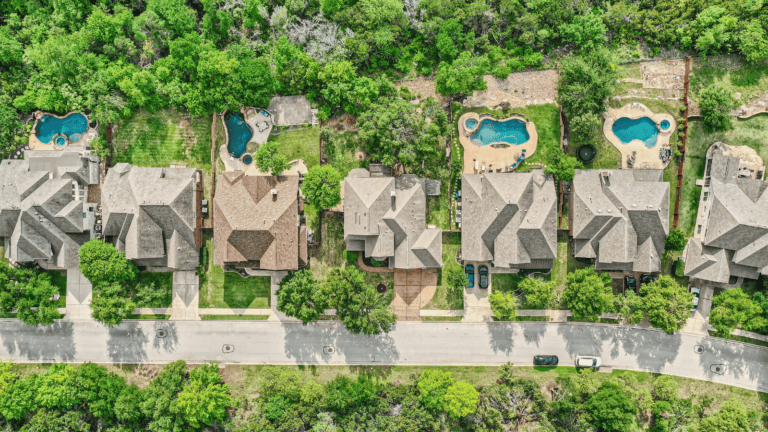Listing agents must complete several essential marketing tasks to help clients sell their homes. One daunting task to most agents is writing the listing description. A listing description provides potential buyers with more in-depth details of a home or property.
There are several ways to make your listing descriptions top-notch. A well-written listing description tells a story and taps into the emotions of a prospective buyer. Additionally, an excellent listing description focuses on the property’s best features without exaggerating the details. The best listing descriptions are grammatically sound, not too wordy, and provide an intriguing narrative.
Curious about what not to do when writing a listing description? Here are our seven dastardly listing description sins to avoid:
Way too many listing details
Third-party listing websites, like Zillow, always provide the essential listing details for viewers. A potential buyer can see the first real estate image thumbnail, number of bedrooms and bathrooms, square footage, and price before even clicking on the listing. Some real estate agents feel the need to add all of these details within the listing description as well.
An overly detailed listing description creates a few problems for the seller. If a wordy listing description isn’t making potential buyers extremely bored, then it’s completely overwhelming them. No one wants to read the same monotonous property details when searching for a home.
Remember that the basic property details are already visible on the listing page. Use the description section to highlight impressive home features and pique the interest of the right buyer.
Poor use of text space
Similar to the perfect number of real estate photos, there’s a sweet spot for word count. As discussed above, some agents use too many words to describe their listing. Too many of the wrong words can hurt your opportunity to attract buyers. On the other hand, too few words in your listing description can also turn buyers away.
According to Zillowtalk, the optimal length of a listing description is around 250 words. Listings with longer descriptions (the 250-word sweet spot) consistently sold for more money than listings with shorter descriptions.
Remember that on-page real estate may be limited across different listing sites and MLS platforms. You may need to tweak your description to fit a more restrictive word count. And if a listing website does not limit your word count, be careful not to write too much. You want to leave some details for the showing.
Glaring grammatical errors
A listing description riddled with grammatical errors and misspelled words can put off potential home buyers. Suppose a buyer finds the narrative challenging to read due to multiple mistakes. In that case, they may become frustrated and leave the listing page altogether.
Additionally, your sellers and prospective clients will feel that your marketing efforts are subpar or that you simply do not care about your profession. A poorly written listing description feels lazy and apathetic. Especially when several online editing platforms, like Grammarly, are available at no cost – although there are robust paid plans available for more frequent writers.
Grammarly allows users to write and edit their content within a browser application. The Grammarly Assistant checks your writing for correctness, clarity, engagement, and delivery based on your specific audience needs.
Stretching the truth
It’s tempting to go overboard with an intriguing narrative to pull in all the buyers. Some real estate agents exaggerate home features in their listing descriptions without realizing the consequences. An interested buyer will look at the real estate images in tandem with reading the description. They can see if the embellished words match up with the listing image.
An over-the-top listing description can cause buyers to speculate. With limited inventory, a listing doesn’t need an out-of-this-world description in today’s market.
Keep your narrative interesting but honest. You’ll be glad you did.
Overused real estate terms
There are so many overused terms and buzzwords that make seasoned real estate agents cringe. When a word or phrase is used ad nauseam, it loses its significance. For example, avoid calling a kitchen “high-end” because it has stainless steel appliances. Why? Because stainless steel appliances are not uncommon in most homes and apartments now. Similar terms include updated, spectacular, open-concept, gorgeous, luxury, and boasts.
Try being creative with your listing description. You can use a thesaurus to help switch up overused words.
The storyline is too exclusive
Making assumptions about your buyer pool is a big mistake. Avoid creating a narrative that pigeonholes your audience when drafting your listing description.
If your listing has a large backyard, don’t mention that it’s specifically suitable for buyers to use with their young children. Or that the room above the garage is great for a mother-in-law suite.
You do not want to push a potential buyer away by telling a story in which they want no part. Be as inclusive as possible with your narrative.
The neighborhood is the main focus
A listing description that focuses too much on the surrounding attractions and community is a big red flag for buyers. While it’s helpful to highlight the proximity of popular restaurants, parks, and grocery stores, too much neighborhood talk can hinder your sale.
Most buyers already have a feel for the area; that’s why their home search is in your listing’s neighborhood. Buyers want to know about the property specifics first. Consider highlighting the neighborhood with real estate stock images if your listing is in an exciting community.
Your listing will shine online by avoiding the listing description mistakes mentioned above. A well-written listing description paired with professional real estate photos always impresses potential home buyers!







